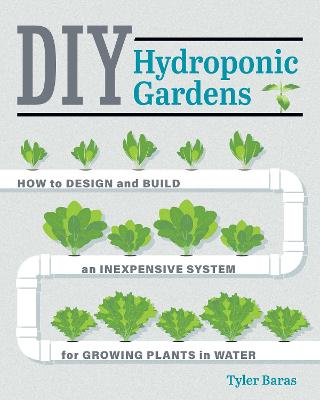Reviewed by annieb123 on
There has been a resurgence lately on more effective use of our gardening resources and much more emphasis on self reliance skills for 'regular' people who don't have a lot of land or the background (or desire) to be full time farmers. Hydroponics, though it's not a new idea, has really come into its own as a method for increasing productivity and there are a plethora of books from which to choose.
Tyler Baras has written a practical how-to book aimed at introducing several different kinds of hydroponic systems along with the pros and cons of each type of system. Most hydroponics books I've seen are impractical because they're either aimed at the professional grower with a lot of money for setup and equipment or they're entirely too simple and impractical because they don't give any real solid how-to or steps for actually getting from the idea of growing crops or flowers hydroponically to doing it.
DIY Hydroponic Gardens spans the middle ground in providing entirely realizable practical systems which have the potential to produce food without being huge, prohibitively expensive, or impractical.
The book is 192 pages, available in ebook and paperback formats and was published by Quarto - Cool Springs Press. It's laid out in a logical format, beginning with and introduction which includes concept definitions, advantages of hydroponic growing and a good overview of the parts of a successful working hydroponic system.
Chapter two covers specific equipment including hardware, substrates, lights, and more, along with some maintenance info and how to take care of problems (like pests) before they become debilitating.
There is a large chapter on specific system setups. Each of these includes a tutorial section which includes tools and supplies for the DIY setup. Each setup includes a recommended plant list and a realistic discussion of the limitations and potential drawbacks.
Propagation, nutrition, maintenance, and troubleshooting, all have chapters including a good (realistic!) photography section showing some of the less desirable outcomes. I really liked that the author showed some of the problems which occurred in his own systems. Most books only show strawberry and lettuce plants bursting with health growing vigorously and apparently trouble-free, so that when bugs or algae pop up, new gardeners feel discouraged and incompetent.
The book has a good glossary and appendix with crop selection charts, conversion tables, a short bibliography and a no-frills index.
All in all a very useful and practical book with usable plans utilizing easily sourced hardware.
Four stars
Disclosure: I received an ARC at no cost from the author/publisher for review purposes
Reading updates
- Started reading
- Finished reading
- 4 August, 2018: Reviewed
